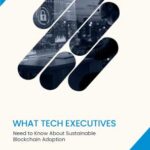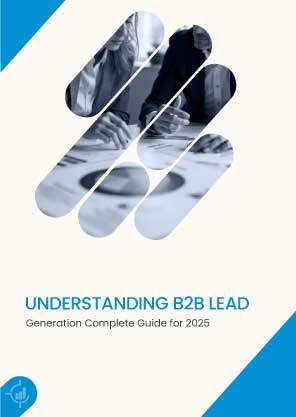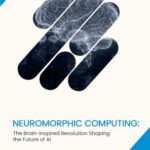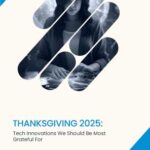or call: +1 (845) 347-8894

or call: +1 (845) 347-8894

Lead generation isn’t just a marketing function in 2025—it’s a revenue survival mechanism. With digital buying journeys now fragmented across channels and decision-makers, failing to capture and qualify leads results in pipeline gaps that compound over time. Buyers are more informed, but also more selective. They want vendors who understand their intent, not just their contact details. In this high-stakes environment, B2B companies must rethink how they attract, engage, and convert interest into real opportunities.
Gone are the days of relying solely on static landing pages or monthly newsletters. The 2025 playbook requires precision, powered by AI, intent data, and orchestrated content that addresses actual buyer pain points. This guide walks you through how lead generation has evolved, what channels and tactics now work best, and how to turn fragmented attention into sustainable conversion paths. Whether you’re a mid-market tech firm or an enterprise vendor, these strategies will help you win attention and trust at scale.
B2B lead generation is the practice of attracting other businesses that may want to buy your product or service. It isn’t just random outreach; it’s attention, interest, value, and locating companies most likely to become your customers. The purpose is to turn strangers into known contacts and eventually buyers.
B2B deals are not as straightforward as simply pitching a decision-maker and parting ways. You are most likely to interact with team members like CFO’s, IT managers, end users, supporting professionals, and internal buyers. Because of this, B2B lead generation is more educational and reliant on credibility-building and consistency; follow-up is paramount.
A lead is a business contact that has indicated some interest in what you have to offer. Contacts can indicate interest in many different ways; they can download your whitepaper, subscribe to your newsletter, visit your pricing or premium service page, or ask for a callback to discuss the service in more depth. A lead can essentially be described as a potential client; at this stage, they are not a paying customer yet. If you nurture that lead along the sales journey possibilities of them becoming a customer are feasible.
At IntentTech Insights™, we define B2B lead generation not just as the act of collecting contact information, but as the strategic process of identifying, attracting, and engaging decision-makers who are actively exploring technology solutions across evolving digital domains. These are not passive viewers; they are high-intent professionals searching for clarity in complexity, and that’s where our expertise steps in.
We believe that B2B lead generation must be predicated on a nuanced understanding of buyer behavior shifts, digital body language, and purchasing triggers, much more than just demographics. In 2025, “capturing leads” is not enough; you must execute multi-channel touchpoints that add value per the exact stage of the buyer’s journey.
For us, a lead is not just a contact; they are the first conversation point with someone who has real interest, is a firmographic fit, and has shown actionable signals. Our framework integrates AI-augmented segmentation with human-first messaging and storytelling at channel-scale, to deliver engagement that drives each touchpoint closer to conversion at the pace and priority they are aligned with.
Not all leads are created equal. In B2B marketing, leads are categorized based on how close they are to making a purchase decision. Understanding these types helps teams prioritize the right people and tailor their approach.
These are prospects who have shown interest, maybe by downloading a whitepaper or signing up for a webinar. While they aren’t ready to buy just yet, they’re actively exploring and can be nurtured with more helpful content over time.
SQLs are further down the funnel. They’ve taken clear actions that show buying intent, like requesting a demo or speaking to a sales rep. These leads are ready for one-on-one conversations and personalized offers.
PQLs are common in SaaS. These are users who have tried your product (like through a free trial) and shown signs of real interest, such as using advanced features or inviting team members. By classifying leads this way, companies avoid wasting time and instead focus energy where it matters most.
Think of lead generation as a funnel with three levels. Each stage helps move a prospect closer to a sale, starting from the first interaction all the way to a signed deal.
This is where prospects first discover you. They may find your blog, watch your video, or read a post you shared. The goal here is to educate and attract, not to sell. Helpful, non-salesy content wins attention.
Now that the lead knows you, it’s time to deepen engagement. Case studies, webinars, and product comparisons help answer their questions and show how you can solve their problem better than others.
At this stage, the lead is almost ready to buy. Sales outreach, demos, and pricing discussions happen here. You prove value and help remove any last doubts so they can make a confident decision. This funnel isn’t just theory; it’s a proven path that helps turn strangers into buyers, step by step.
Lead generation in 2025 is more digital, data-driven, and experience-focused than ever before. By 2025, 80% of B2B sales interactions will occur via digital channels. Companies are using multiple methods to attract leads, often combining channels for better results.
In 2025, that no longer means ranking on page one – it now means being the best to the intent of the buyer. Google’s new AI-powered algorithms are more intelligent than ever and prioritize pages that answer buyers’ questions with context. Your content must connect directly to the buyer in terms of the stages of awareness, evaluation, and decision.
Instead of worrying about SEO vanity metrics, the most successful B2B brands are publishing video and high-quality, niche deep-dive resources, resource pages, use cases, comparison guides, and original research that help them earn traffic and trust. Newer blog interactive formats, AI-generated summaries, and anchor-linked breakdowns help improve dwell time and lead capture.
Paid media is evolving fast. In 2025, LinkedIn, Meta, and programmatic platforms offer firmographic and behavioral targeting that helps brands reach the exact decision-makers they need. Instead of spray-and-pray ads, marketers now use:
With conversation ads and pre-filled lead forms, LinkedIn remains the gold standard for mid-funnel capture.
Email remains the most cost-efficient B2B channel when executed correctly. In 2025, automation has evolved to track micro-engagements: link clicks, PDF downloads, and even time-on-page. Platforms like HubSpot and Marketo now offer real-time behavioral segmentation, meaning your emails adapt to what prospects do, not just what list they’re on.
Drip campaigns, personalized video messages, and AI-written subject lines increase open rates and CTRs. You can also trigger re-engagement flows automatically when prospects go silent, improving lifecycle retention.
Content that requires interaction delivers higher intent leads. Webinars, when promoted well, serve as excellent mid-funnel assets that build credibility while collecting first-party data.
Similarly, podcasts now act as awareness drivers, especially among executive audiences. B2B brands are also investing in tools like ROI calculators, readiness assessments, and interactive guides to give users value in exchange for their information.
While the world has gone digital, offline lead generation still matters—especially in B2B. What works best often depends on your industry, product, and audience.
Websites, social media, email, and search play a big role. These channels scale fast, offer real-time data, and allow for automation. You can reach thousands without ever leaving your desk.
Trade shows, networking events, industry meetups, and direct mail can still create meaningful connections. Especially for high-ticket products, face-to-face trust still wins deals. In 2025, the best B2B strategies blend both. For example, you might meet a lead at an event, then nurture them through email. Or capture their details through your website and meet them later at a conference.
Modern lead generation runs on smart tools. These platforms save time, track performance, and help teams stay organized across touchpoints.
These systems store lead data, track interactions, and help sales teams follow up efficiently. They act as the central hub for all lead activity.
These tools send personalized emails at scale. You can trigger messages based on user behavior—like clicks or downloads—to stay relevant at every step.
These tools help you identify which leads are worth chasing. They enrich contact info with firmographics, rank based on engagement, and ensure your sales team focuses on the best-fit prospects. By integrating these tools, businesses make their lead generation system smarter, faster, and more efficient.
Even the most innovative lead-generation strategy fails without proper measurement. In 2025, B2B marketers will rely on a blend of real-time analytics, predictive dashboards, and closed-loop reporting to assess effectiveness.
Start by aligning your lead gen KPIs with business outcomes. Don’t just measure clicks—measure how many MQLs turn into revenue. Funnel velocity, cost per opportunity, and sales cycle length are now standard metrics in modern attribution dashboards.
Lead generation isn’t a one-time campaign; it’s a long-term system that fuels every stage of your growth. In 2025, success means putting the buyer first, using data smartly, and showing up consistently where your audience already is. By mastering the basics, avoiding common traps, and staying ahead of tech shifts, your B2B business can generate more than just leads—you can generate trust, value, and long-term customers.
A lead is someone who has shown initial interest in your product or service, perhaps by signing up for a newsletter or downloading a resource. A prospect is a more qualified lead who fits your target customer profile and shows stronger buying intent. Think of a lead as an early-stage opportunity and a prospect as someone your sales team actively pursues.
Track key performance metrics such as conversion rate, cost per lead (CPL), lead-to-customer ratio, and sales cycle length. A successful strategy brings in leads that engage, move through the funnel, and convert. If leads are stagnant or your sales team is struggling to close, your lead-gen approach may need refinement.
Absolutely. Content is still the foundation of modern lead generation. Informative blogs, case studies, webinars, and videos establish trust and drive inbound interest. In 2025, content must be personalized, intent-driven, and mobile-optimized to meet the evolving expectations of B2B buyers.
Both can work, but it depends on your audience and goals. LinkedIn Ads are great for targeting job titles, industries, and decision-makers directly. Google Ads are ideal when you want to capture demand from people actively searching for solutions. A hybrid strategy often yields the best results.
Lead scoring is a method of ranking leads based on how likely they are to convert. It uses data like job role, industry, behavior (e.g., email clicks or demo requests), and engagement level. It helps sales teams prioritize who to follow up with first, saving time and boosting ROI.
To participate in our interviews, please write to our IntentTech Media Room at sudipto@intentamplify.com




